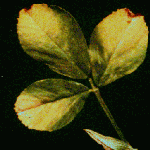Fireflies are out and about, here and there — and when you see them, know that corn rootworms are most likely hatching. If this is year one of a corn rotation, not to worry. Otherwise — scout. Small investment, big returns.

Stable fly adults — ouch — have emerged via slowly growing larvae from overwintering sites near barns and feedlots. They’re hard at work doing what they do best: biting cattle and horses for the blood meals that females need to lay eggs. It’s “pain, no gain” for cows, which give less milk when bugged by flies.
Potato leafhoppers are blowing in from points south. Keep an eye on your alfalfa (and your potatoes!) — a bad leafhopper year is bad news for your bank balance. Be quick to scout after a storm — the downdrafts that precede each front will drop adults onto your fields. Plant “hairy alfalfa” varieties that leafhoppers don’t like.

Armyworms, like potato leafhoppers, are long-distance migrants. Adult moths cruise in on northbound storms, but it’s the larvae that pose problems. Some armyworms we saw were diseased — infected by a fungus. Others were parasitized by tachinid fly larvae; the adults dine mainly on flower nectar. Good work by unsung heroes.